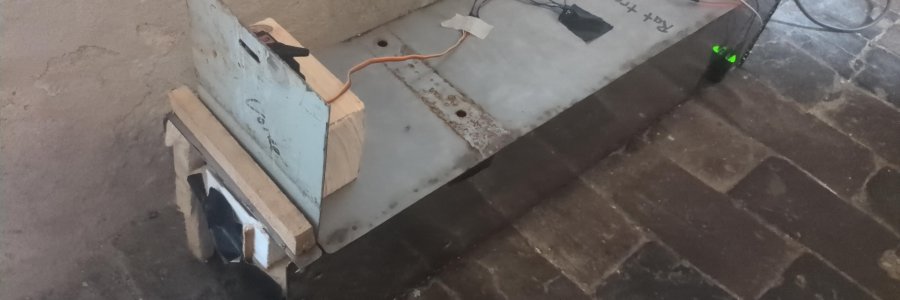Sometimes rodents find their way into the Kanthaus. This is due to openings in the outer shell of the house. Sometimes people leave the doors to the garden open. But above all, heating pipes sometimes run through the outer shell of the house, which has never (yet) been properly sealed. So far, this has mainly been an occasional mouse. Recently, however, something new was spotted: A huge creature, according to eyewitness reports at least 30cm long. A rat.
What to do?
Our strategy for the (peaceful) fight against the giant rodent consists of three components:
- save food
- seal entrances
- relocate the rodent
Save food
At the Kanthaus, we've always been good at saving food. Usually that means saving it from (or out of) the trash; this time we're saving food from other food in the Kanthaus. Fortunately, the habitat of rodents in the Kanthaus has so far been limited to the cellar. Unfortunately, we store a lot of (mainly rescued) food in the cellar. Fortunately, however, we have a room in the basement with a fire door. And what's good enough for fire protection is also good enough for hungry rodents.
So we made sure that everything that makes a rat's heart beat faster is either rodent-proof (e.g. in buckets) or stored in the former boiler room. This seems to have solved the most acute problems: Our food is now only eaten by residents in the Kanthaus, who are also welcome here.
But the problem is not yet completely solved. Because if rodents have nothing else to eat, they can start a fire.
Seal off entrances
There are two entrances for rats in the Kanthaus:
- doors
- holes
Doors
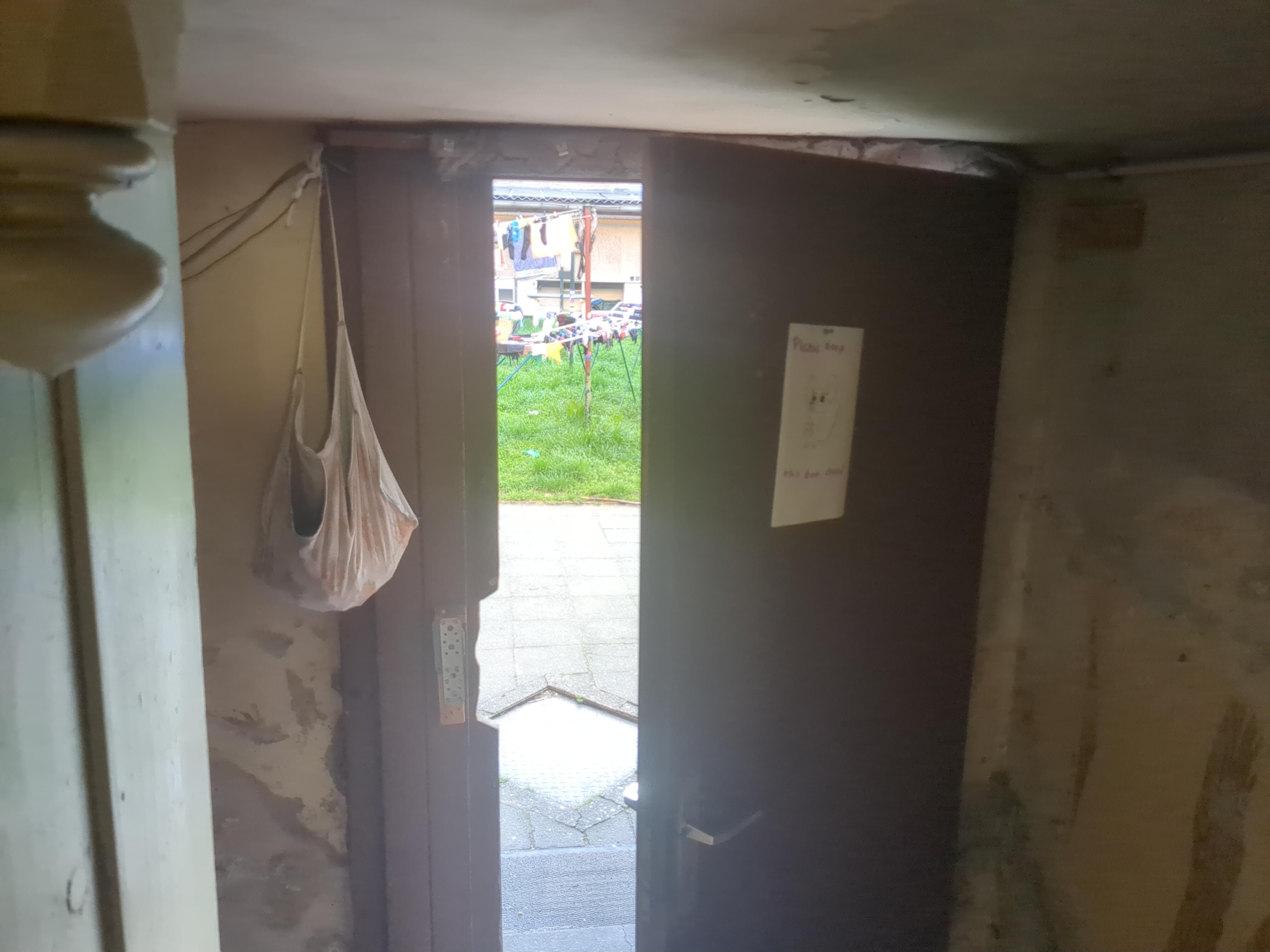
Actually, this should be easy: If everyone knows that the doors should be closed, everyone closes the doors. Unfortunately, it doesn't work that easily in practice. Even though we've put signs on the doors and it's always mentioned, the doors are always open. Be it because people find the air so pleasant, forget about it, don't have a free hand, or are new and it hasn't been explained to them. So this problem is still unresolved. Do you have ideas on how we can solve it? Write to us!
Holes
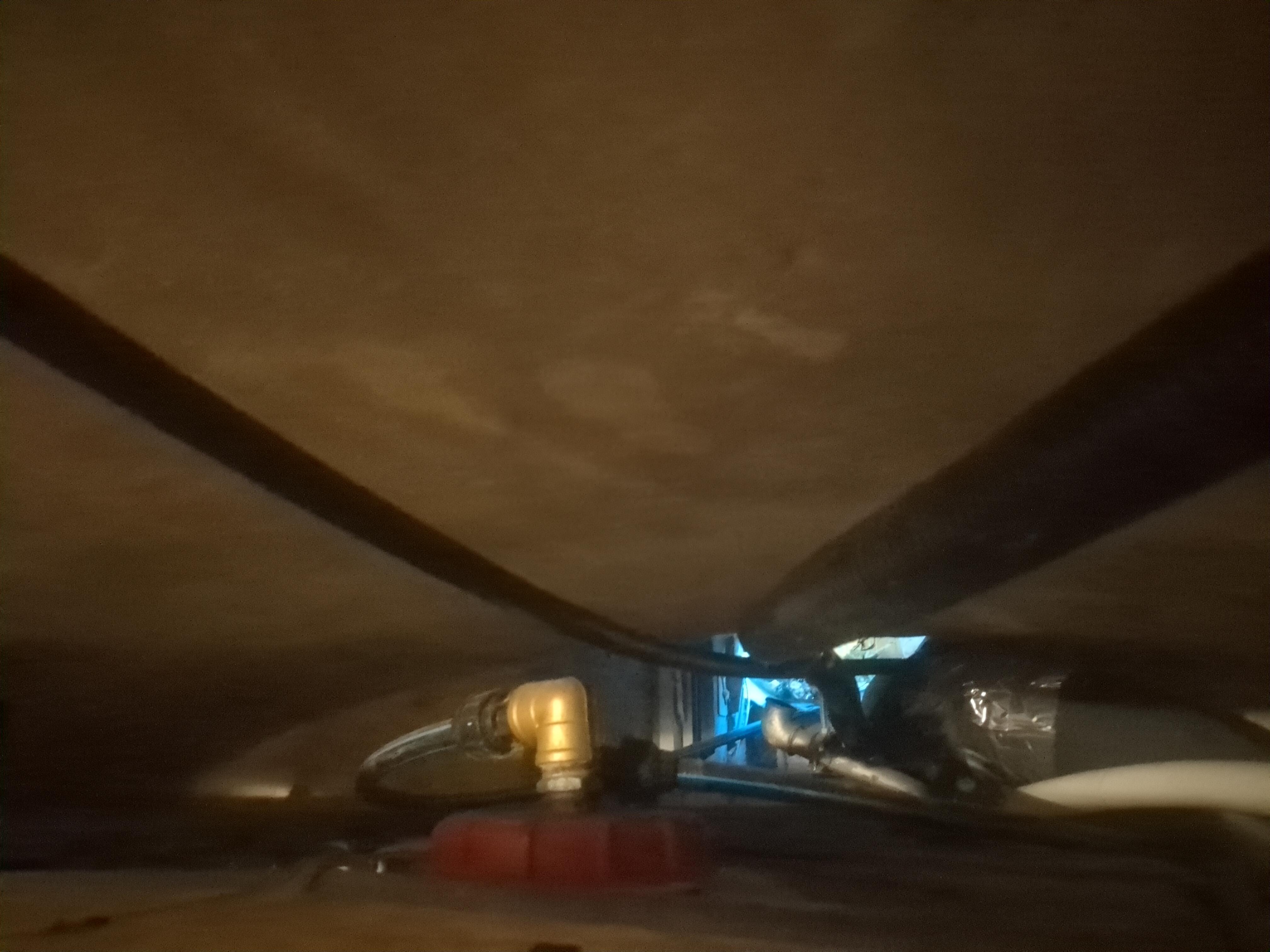
This problem is also still unresolved, but not for long. When the heat pump was installed, the pipes were simply laid through a basement window. This causes two problems at once:
- rodents can get in
- cold / heat can get in
This hole will therefore soon™ be plugged with rat-proof material (e.g. stones and steel wool).
Relocating rodents
This is the interesting and slightly fun part (at least for me). The relocation consists of three parts:
- catching
- driving away
- release
1. catch
Inspiration
Rumor has it that there was once a rat at Kanthaus that was successfully caught. For this purpose, a can was fastened rotatably over a rain barrel and smeared with liver sausage. After about a month, the rat tried to eat the liverwurst, the can turned and the rat fell into the barrel. Although rats jump remarkably high, it did not get out of the barrel.
1st attempt
Inspired by this success, I started the first attempt at a trap:
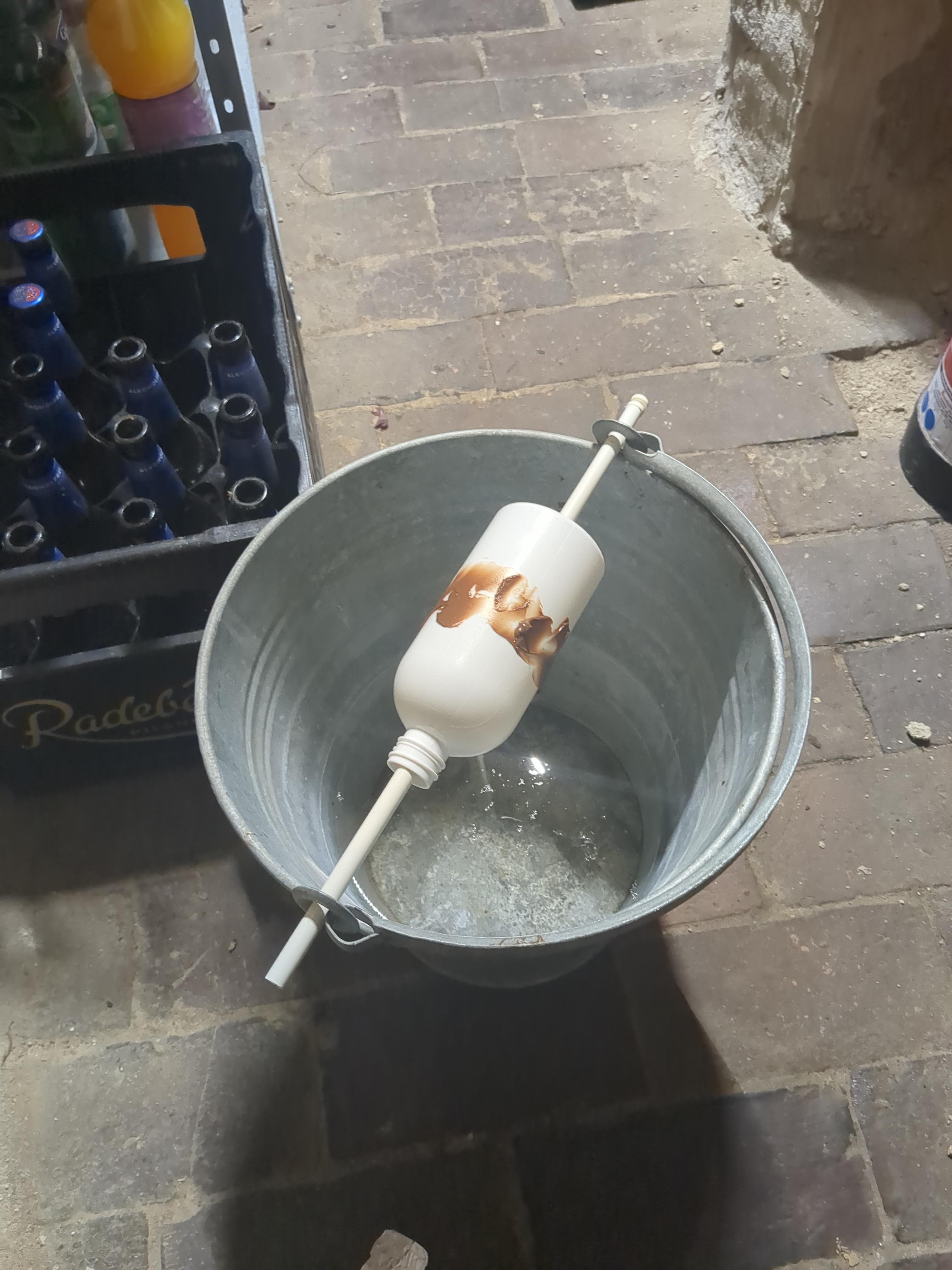
I took a tin bucket, drilled a hole in a plastic bottle, pushed a (slightly narrower) metal rod through it, pushed the metal rod through the handles of the bucket, poured some water into the bucket and coated the bottle with chocolate cream. The idea was that the rat would try to reach the chocolate cream from the side where there was no bar, slip off the spinning bottle and fall into the bucket. The water was supposed to reduce the rat's ability to jump so much that it wouldn't get out again (but at the same time wouldn't drown).
This did not work: The rat simply pushed the bottle to the side.
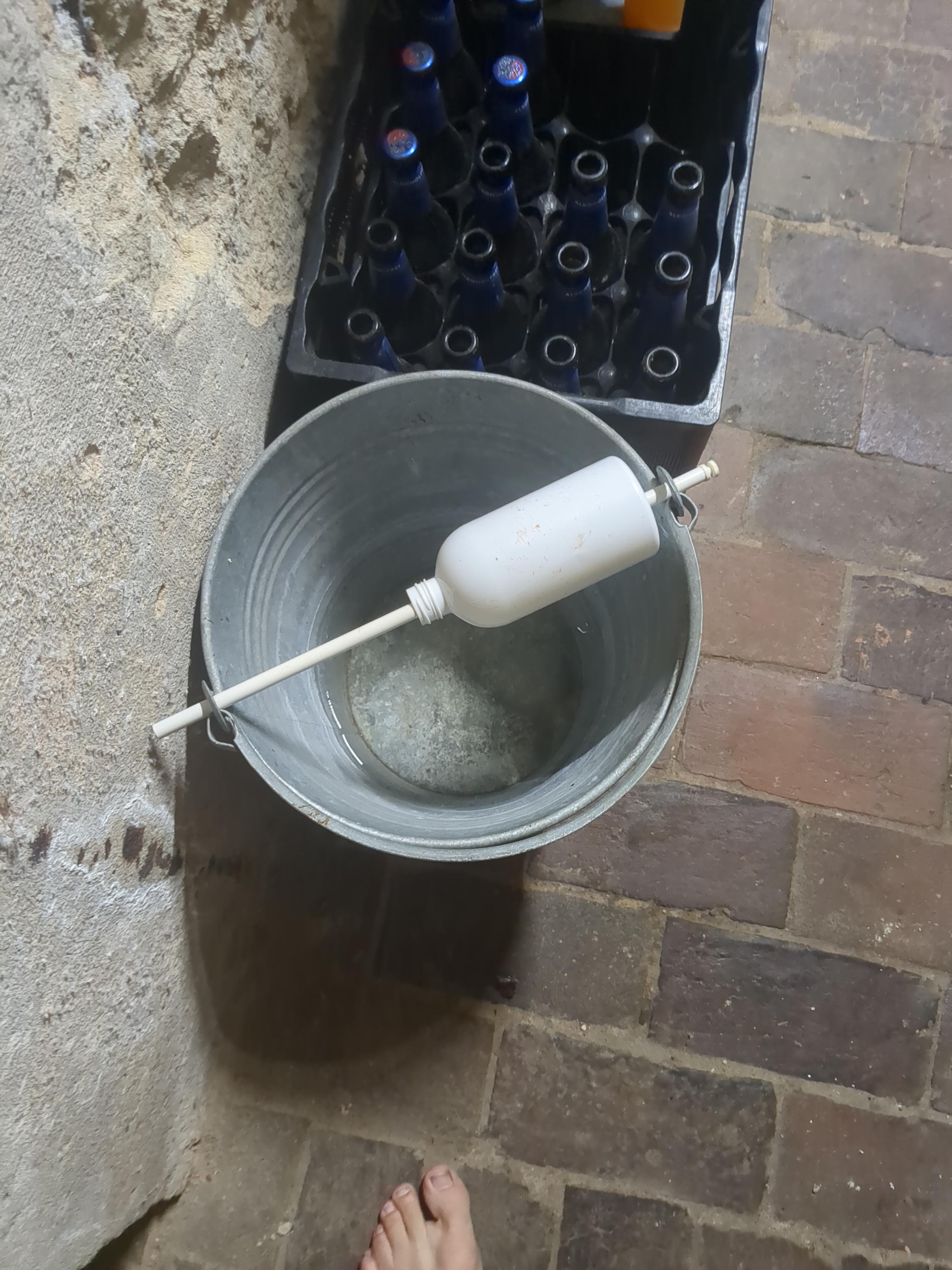
2nd attempt
I was still convinced by the concept of the first version, so I made a few improvements. I replaced the bucket with a taller rain barrel (without water), strung the bottle on a string and tied things to the string on the inside so that the bottle couldn't be pushed to the side. Unfortunately, I didn't have any good bait left, so I smeared sugar beet syrup on it and stuck bacon on it. Disgusting!
I'm still not sure if it all dripped off or if the rat actually contributed to it. In any case, the trap was unsuccessful:
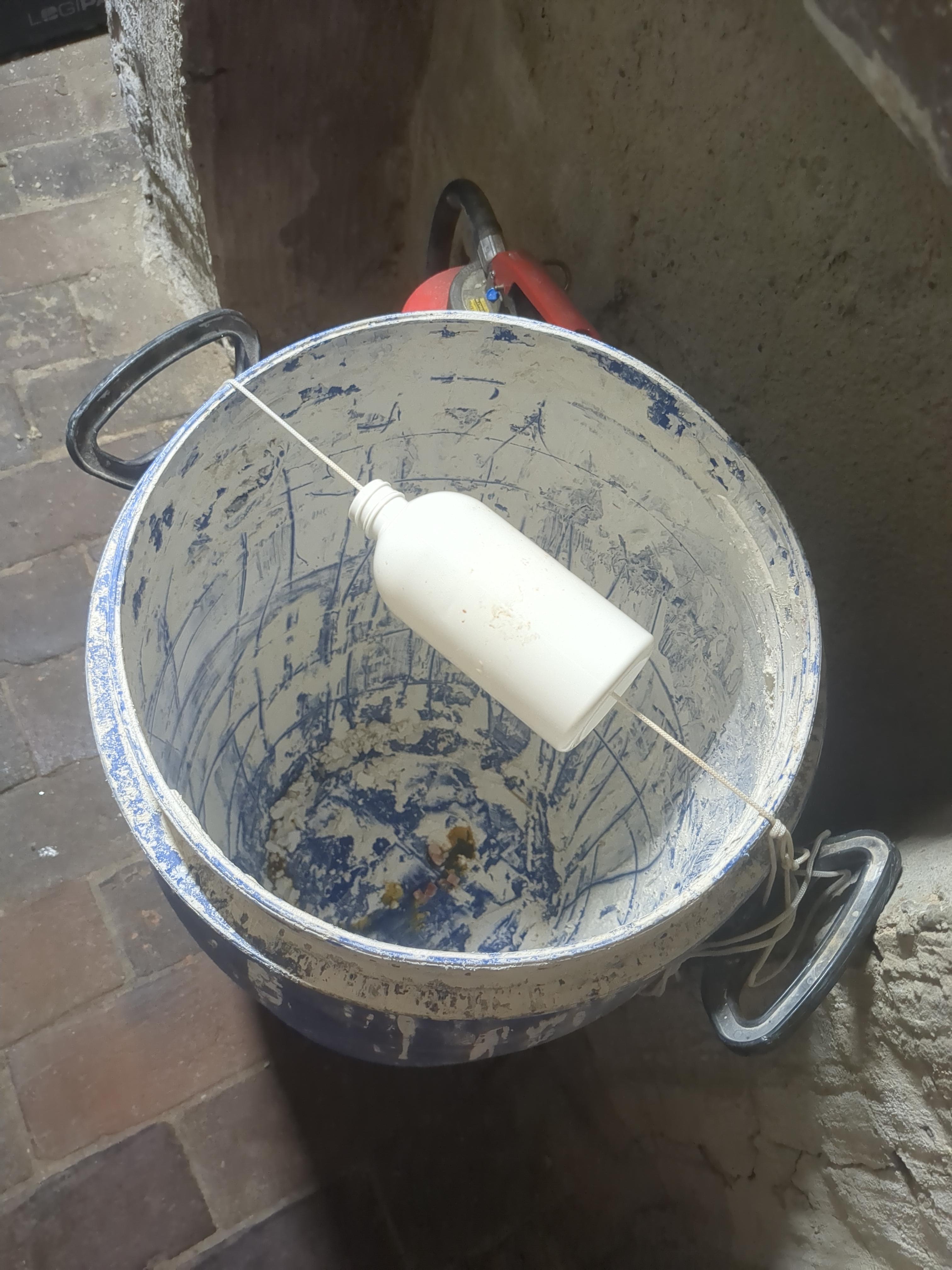
3rd attempt
Even before I had started the second attempt, I realized that I needed a more sophisticated solution for this rat. Together with Gwen, I started to build a smart trap. The rattrap is open source, has two light sensors, a servo motor, a magnetic shutter and WiFi to write notifications via Mattermost.
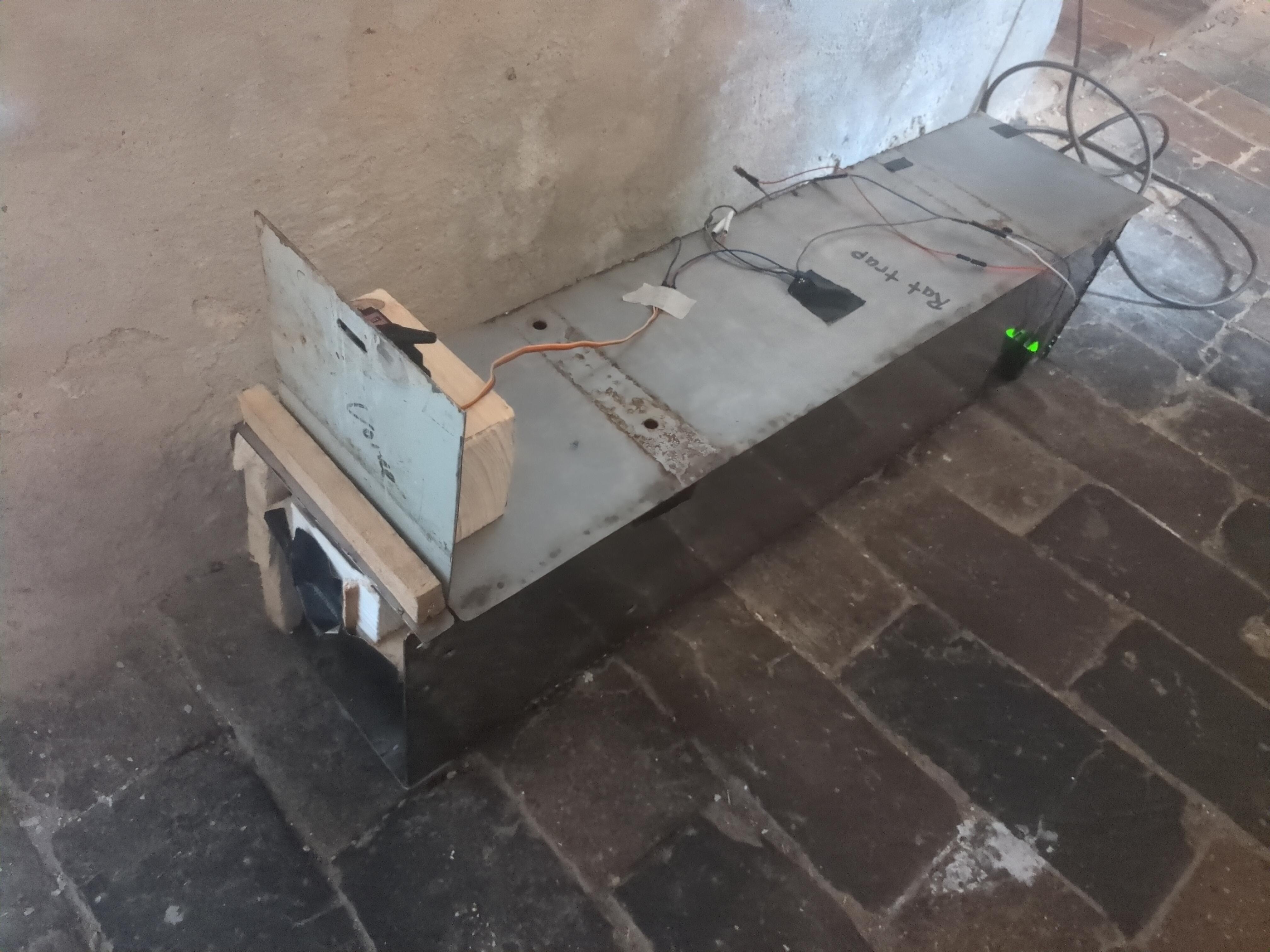
Gwen has welded the body together from scraps of metal. There is a slot at the front of the trap where the gate drops down. On a block of wood is a servo that has an arm in a slot in the gate to stop it from falling down. If the rat runs in far enough (attracted by a lure at the end), it triggers one of the light sensors, the motor turns and the gate falls down. Magnets at the bottom of the gate and under the entrance prevent the rodent from pushing the gate open again. The trap is controlled by an ESP32 NMCU, which also sends a notification to an extra Mattermost channel as soon as the trap slams shut.
There were some difficulties with the rattrap:
The metal plates have different dimensions, which made welding more difficult. This is why the trap is not a perfect cuboid. Rats don't seem to mind
- I spent a few hours trying to control an ESP32 that seems to be defective
- Detecting a rat inside turned out to be surprisingly challenging:
- At first we were going to use a light sensor. At some point, however, we realized that our model only has a range of 6 cm. However, our trap has a width of approx. 15 cm
- The second idea was an ultrasonic sensor. However, rats hear in the ultrasonic range
- A motion detector seemed ideal to us. Motion detectors detect moving objects that radiate in the infrared range. So rats, for example! However, the steel box probably reflected too much, so that we could not reliably detect whether the rat had run far enough in (or whether we had caught a rat at all!). This sensor led to false alarms :(
- In the end, I decided to use two light sensors. That seemed like overkill to me, but at least it works. So I installed the light sensors in opposite holes and that seemed to work. However, the first night the trap was active, there was another false alarm! After some back and forth and consultation with other Kanthausianis, I realized that the light sensors illuminate each other, which leads to measurement errors
- So I built a second hole in the trap, which seems to have solved the problem
- To trap the rat, the gate must be closed quickly (in less than 500ms).
- At first I wanted to use an electromagnet. But we don't have any electromagnets that are not built in
- So I built my own electromagnet: I disassembled an electromotr, unwound the coils and wrapped the enameled copper wire around an iron nail. However, this electromagnet turned out to be very weak
- After some back and forth, I decided to use a servo motor. The motor has an arm in a slot in the door. It is powered by an external power source, which I soldered together quickly
- The first night the false alarm went off, I was worried (paranoid?) that the rat might open the gate. So I stuck a magnet to the gate and put another one under the front of the trap. So when the gate closes, the magnets hold it in place
A few hours after all these problems had been solved, F. went down to the cellar during the day to get some of the supplies. Suddenly Larissa calls out to us sitting in the garden upstairs from the Snack Kitchen that the rat trap had caught something! I couldn't believe that the trap had sprung while F. was in the cellar and had already started to turn down the sensitivity of the sensors in the code on the laptop. Then F. comes running out of the cellar and shouts that we've actually caught something!
So on to step 2...
2nd drive away
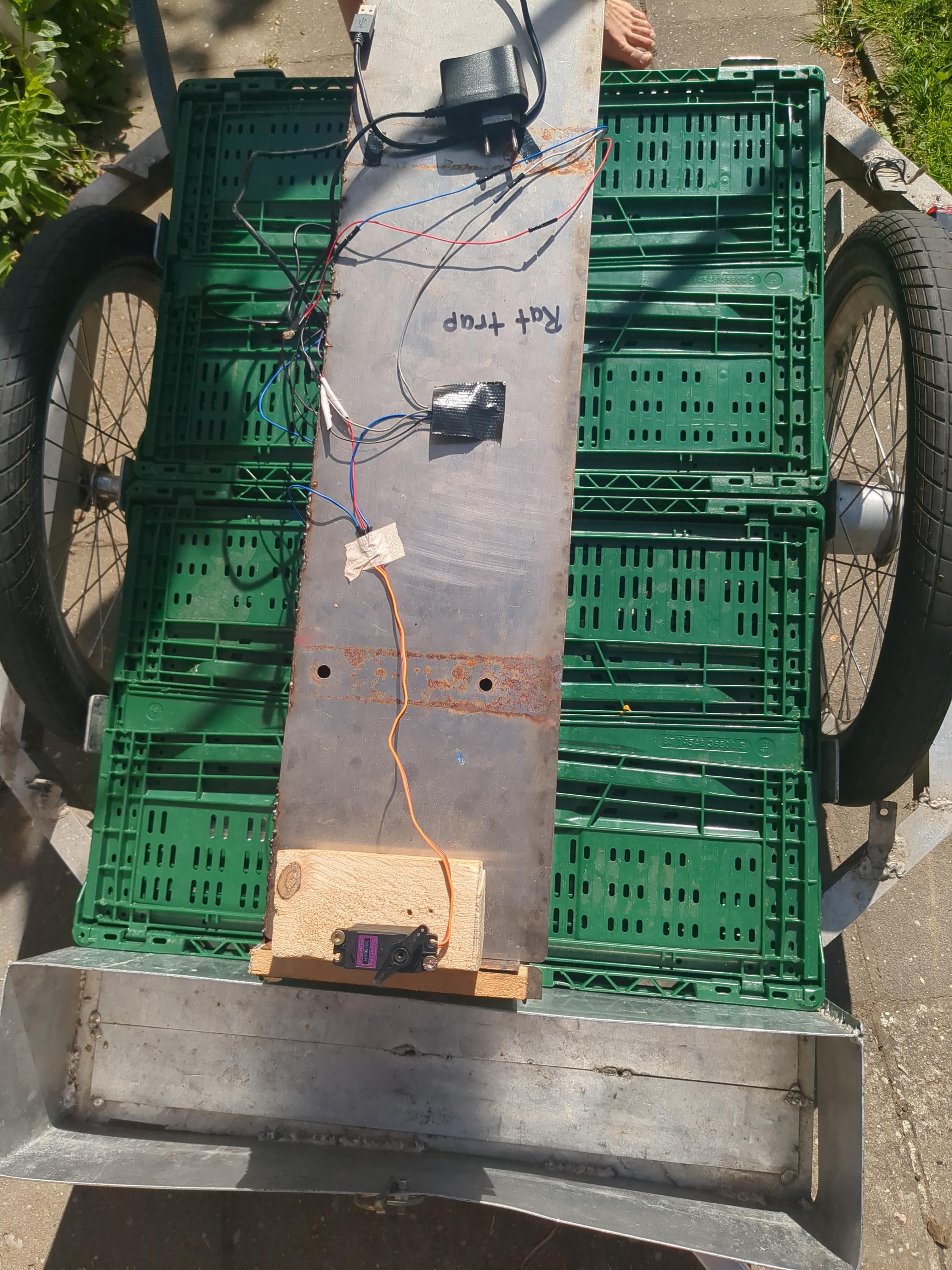
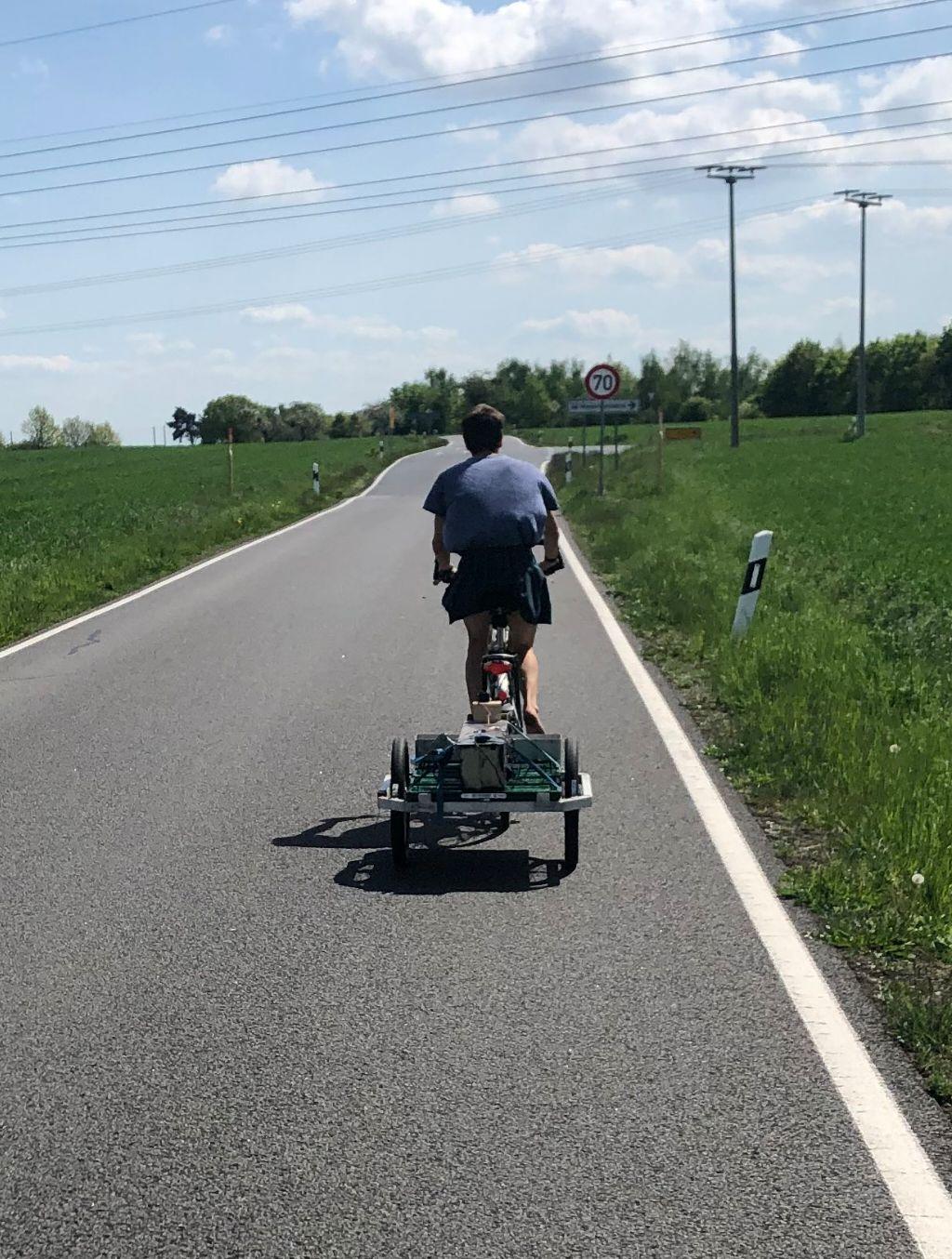
It is a difficult question where a rat should be released. On the one hand, we don't want to kill it. It helps its chances of survival if it finds its way back to its family; for this it should be taken no more than 100m away. On the other hand, we don't want her to find her way back to our cellar, so she has to be taken at least 3 km away (to be on the safe side). As we have not yet closed the entrances to the cellar, we have decided to take her at least 3km away.
So Gwen and I put the trap on a trailer and set off on our bikes.
3rd release
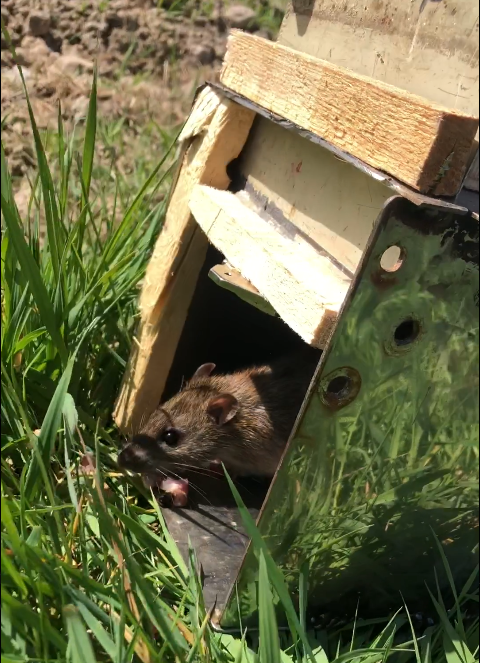
Finally, we released it at the edge of a group of trees a nice distance away from the Kanthaus. The rat probably survived the trip well; it sat in the trap and nibbled on the bait. When it was finally out, it tried (unsuccessfully) to jump at me in an act of heroic revenge and then ran off in the direction of the Kanthaus. I don't think she'll find a way back. But maybe she has started a new, beautiful life in nature.
Conclusion
Complicated solutions with WiFi are always better!
